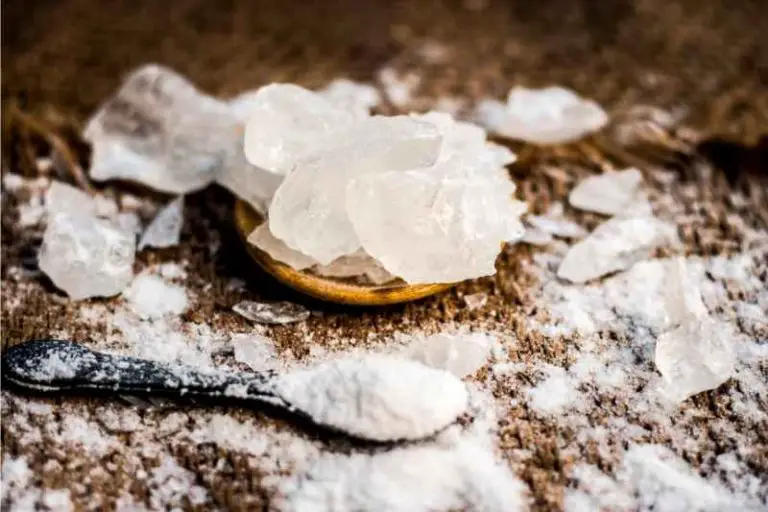Which Clays Are Highly Plastic?
Plasticity refers to the ability of a clay to deform without cracking or rupturing. Highly plastic clays are easy to shape or mold and exhibit high dry strength. They are valued for their workability and cohesiveness. The plasticity of a clay depends on its mineralogical composition and particle size. Clays are comprised of phyllosilicate (sheet silicate) minerals that have a layered crystal structure. Certain types of clay minerals such as smectite have the ability to absorb large amounts of water in between their crystal layers. This interlayer water allows the mineral layers to slide over each other when pressure is applied, imparting plasticity.
The most plastic or workable clays include montmorillonite and bentonite, both of which are smectite clays. Other highly plastic clays are palygorskite and halloysite. High plasticity clays are ideal for applications like pottery, ceramics, cement, drilling muds, foundry molding sands, and pelletizing iron ore. This article will provide an overview of the most plastic clay types and their key properties and uses.
Kaolinite Clays
Kaolinite clays are one of the most common plastic clay types found in nature. They are formed by the chemical weathering of potassium, sodium, calcium, and magnesium aluminium silicate rocks like feldspar and mica. Kaolinite clays have a 1:1 layer structure, meaning each layer consists of one tetrahedral silica sheet and one octahedral alumina sheet.
Kaolinite clays exhibit moderate plasticity and high dry strength. Their plasticity arises from the hydroxyl groups on their exposed surfaces. When water is added, hydrogen bonds form between the hydroxyl groups and water molecules, allowing the layers to slide over one another and the clay to be molded. However, kaolinite clays have low shrink-swell capacity and low cation exchange capacity compared to other clay types.
The main industrial use of kaolinite clays is in the production of kaolin or china clay. Kaolin has a very fine particle size and exhibits whiteness, making it ideal for use in ceramics, paint, paper, plastics, rubber, ink, pharmaceuticals, and cosmetics. It is also used in some cement formulations to enhance certain properties. Other applications include as a filler in adhesives, as a coating pigment, in fiberglass production, and in insecticides and medicines.
Smectite Clays
Smectite clays, also known as montmorillonite-smectite clays, are composed of expanding crystal lattices that contain exchangeable cations such as sodium, calcium, magnesium, and iron. This gives smectite clays the ability to absorb significant amounts of water, leading to major volume changes. The most common smectite clay minerals are montmorillonite and bentonite.
Montmorillonite has a high cation exchange capacity (CEC), meaning it can readily adsorb cations and water molecules between its layered sheets. This gives montmorillonite excellent plasticity and swelling properties. It is used in a variety of applications including industrial binders, pet waste absorbents, and drilling mud.
Bentonite forms from the weathering of volcanic ash and consists predominantly of montmorillonite. It can absorb several times its weight in water and expand substantially in volume. Due to its colloidal and absorbent properties, bentonite has many uses including clay liners for ponds and lagoons, civil engineering applications, clarifying wine and beer, and pet litter.
Overall, the expansive nature and absorbency of smectite clays like montmorillonite and bentonite make them highly plastic and useful for industrial applications requiring sorption, sealing, and binding capabilities.
Illite Clays
Illite clays are phyllosilicate or layered clays composed of fine microscopic plate-shaped crystallites of illite minerals. They are an important group of industrial clays due to their unique properties.
Some key properties of illite clays include:
- Moderate plasticity and dry strength.
- Low swelling capacity and high microporosity.
- Relatively high cation exchange capacity.
- Typically light gray, greenish gray, or silver gray in color.
- Forms flat hexagonal plate-like particles.
Due to their properties, illite clays have several important industrial uses including:
- As a key component of oil well drilling muds – their plate-like structure helps provide viscosity and gel strength.
- In foundry applications for molding and core sands – they impart good green strength.
- As filler in paper, paint, rubber and other applications where their platelet structure provides reinforcement properties.
- In ceramics and refractory applications when mixed with other clays.
Overall, illite clays are an essential group of industrial clays thanks to their versatile properties and performance.
Vermiculite
Vermiculite is a hydrous phyllosilicate mineral that exhibits a high degree of plasticity. When heated, vermiculite expands greatly, forming lightweight material with many small spaces between the flakes. The name vermiculite derives from vermicularis which means ‘worm-like’ in Latin, referring to the worm-like appearance of the mineral flakes after exfoliation.
The key properties of vermiculite that contribute to its high plasticity include:
- High water holding capacity – Vermiculite can absorb large amounts of water into its structure.
- High cation exchange capacity – Vermiculite has a high capacity to exchange cations such as potassium, calcium, and magnesium with the soil solution.
- High surface area – The vermiculite flakes have a very high surface area to volume ratio.
- Flexibility – The vermiculite flakes are flexible and compressible.
The plasticity and water retention properties of vermiculite make it useful for many applications including:
- Soil amendment – Blended into soil, vermiculite improves aeration, drainage, and moisture retention.
- Packing material – Used to protect fragile items during shipping.
- Insulation – Versatile insulation for high temperature equipment like furnaces and fireplaces.
- Horticulture – Added to potting mixes and soilless mediums to improve aeration and water holding capacity.
Attapulgite Clays
Attapulgite clays have unique properties that make them highly useful in industrial applications. Attapulgite is a type of palygorskite clay characterized by its high absorption capacity and colloidal properties.
The structure of attapulgite consists of chains of double tetrahedral silica sheets linked laterally by octahedral chains of magnesium and aluminum hydroxides. This ribbon-like structure creates narrow tunnels or channels that give attapulgite an extremely high surface area.
Due to its porous nature, attapulgite can absorb up to 5 times its weight in water. It also readily absorbs oils, greases, and other organic compounds. This makes it invaluable as an absorbent in many industrial and environmental applications. Attapulgite clays are commonly used as oil well drilling additives, absorbents for oil and chemical spills, cat litter materials, animal feed additives, and more.
In addition to absorption, attapulgite has unique colloidal properties that allow it to form gels and suspend solids. Its rod-shaped particles can form three-dimensional networks, giving it excellent thickening and suspension abilities. This makes it useful as a thickener and suspending agent in paints, cosmetics, adhesives, and other industrial formulations.
Overall, the distinctive properties of attapulgite in absorption and colloid chemistry make it one of the most versatile industrial clays. Its unique structure lends itself well to a wide range of uses where high absorption, viscosity, and suspension are needed.
Sepiolite
Sepiolite is a clay mineral with highly a fibrous structure that makes it unique from other clays. It has a flaky and porous structure with fine needle-shaped rods which give it a high surface area. Some key properties of sepiolite include:
– High porosity and surface area – The fine needle-like structure creates lots of pores and channels, leading to an extremely high specific surface area of around 300 m2/g. This gives it excellent adsorption and absorption properties.
– High sorption capacity – Due to the high surface area, sepiolite can adsorb molecules like oils, gases, and organic compounds efficiently. This makes it useful as an industrial absorbent.
– Rheological properties – The rods impart thixotropic characteristics, meaning sepiolite can form gels and stabilize suspensions, while also allowing flow under shear stress. This makes it useful as a thickener, stabilizer, and suspending agent.
– Chemical stability – Sepiolite is stable over a wide pH range and resistant to acids, alkalis, and bleach. It can withstand high temperatures up to 900°C.
Due to these unique properties, sepiolite has many industrial applications including:
– Absorbents – Used for spill cleanup, pet litter, odor control, wastewater treatment
– Rheology modifiers – Used as thickeners and suspending agents in paints, drilling fluids, greases, cosmetics
– Catalyst and molecular sieve – Used as a catalyst support and molecular sieve
– Construction – Added to mortar and plasters to improve workability and flexural strength
– Animal feed – Used as an anti-caking agent and pelletizer
Palygorskite
Palygorskite is a very plastic clay because it can absorb large amounts of water between its unit layers. It exhibits thixotropic properties, meaning its viscosity decreases when stress is applied but recovers after the stress is removed. Palygorskite has high surface area and porosity, conferring strong adsorption capacity.
Some key properties of palygorskite include:
- High water absorption and swelling ability
- Thixotropic behavior
- Large specific surface area
- High cation exchange capacity
- Low thermal conductivity
Thanks to its unique properties, palygorskite has many industrial and commercial uses including:
- Absorbent in cat litter
- Binder and suspension agent in pesticides and fertilizers
- Thickener and stabilizer in industrial fluids like drilling muds and cement
- Clarifying agent in beverages like beer and wine
- Adsorbent for waste treatment and purification
- Carrier and filler in pharmaceuticals and cosmetics
Palygorskite has an abundance of applications across diverse industries due to its highly plastic nature and desirable rheological properties.
Halloysite
Halloysite is another clay mineral that exhibits high plasticity and is commonly used in ceramics and pottery. The tubular morphology of halloysite particles provides some unique properties compared to other clay minerals.
Some key properties of halloysite include:
- Hollow tubular structure – Halloysite has a rolled nanotube structure that provides high surface area and pore volume. This tubular shape is useful for encapsulating active agents.
- Low conductivity – The empty lumen of the nanotubes results in low thermal and electrical conductivity. This makes halloysite useful as an additive in plastic composites.
- High porosity – The shape of halloysite provides microporosity, which is beneficial for applications like controlled release of drugs or biocides.
- Absorbency – Halloysite can absorb and hold a significant amount of water and chemicals within the tube structure.
Some of the main uses of halloysite in industry include:
- Drug delivery – Halloysite nanotubes can be loaded with pharmaceuticals and provide extended release.
- Cosmetics – It is used as an additive for scrubs, creams, and other cosmetics to control the release of active ingredients.
- Plastics – Adding halloysite nanotubes to polymers can enhance properties like fire retardancy, strength, and durability.
- Filtration – The porous structure of halloysite makes it useful for water purification filters.
- Catalyst support – The high surface area allows halloysite to support catalyst nanoparticles for applications like fuel cells.
Conclusion
In summary, the most plastic clays discussed are smectite clays like montmorillonite, bentonite, and hectorite. These clays have expanding crystal lattices that allow water to penetrate between the layers, causing them to swell and making them highly plastic and cohesive. They are commonly used in products like cat litter, drilling mud, and cement.
Kaolinite clays also demonstrate high plasticity at appropriate moisture contents, although lower than smectite clays. Their non-swelling layered structure allows them to be molded and hold shape. Kaolinite clays are essential ingredients in porcelain, bone china, and ceramic bodies.
While not as inherently plastic, other clays like illite, vermiculite, attapulgite, sepiolite, palygorskite and halloysite can be combined with fluxes to increase workability in clays used for pottery and construction applications.


